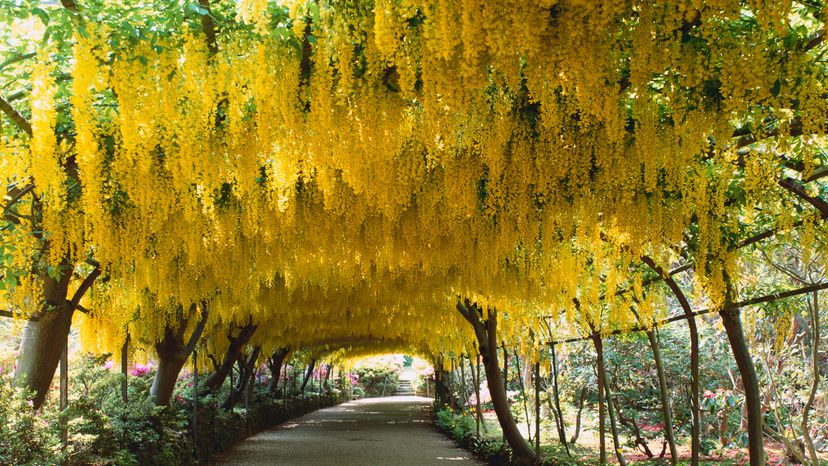
Golden-chain tree is a stunning, small tree noted for its long, pendulous clusters of flowers. A member of the pea family, Laburnum x Watereri is a hybrid cross between the common and Scotch laburnum. Golden-chain tree is native to Europe and widely planted there. All plant parts contain cytisine, an alkaloid that is toxic to children, adults, and livestock if eaten.
Description of golden-chain tree: This vase-shaped tree grows about 10 to 15 feet high in cultivation. Short-lived, pealike, yellow blossoms, 6 to 10 inches long, cascade from its branches. Its bright green foliage is composed of three leaflets, and the bark is pleasantly olive green.
Advertisement
Growing golden-chain tree: Plant laburnum in well-drained soil. Find a sheltered spot away from windy spots and hot, noonday sun. Its bark is prone to sunscald in winter if poorly placed, and its foliage can get burned if used in dry or windy sites. It does not thrive in hot, humid regions.
Uses for golden-chain tree: This plant is best used as an accent plant in the shrub border. Avoid street use.
Related varieties of golden-chain tree: Laburnocytisus adamii is a true botanical curiosity. It occurred when a plant of Cytisus purpureus was grafted onto a stalk of Laburnum anagyroides and produced a single branch showing characteristics of both parents. Cuttings taken from this branch produced a small tree that moves back and forth between both parents. Its flowers can be pinkish purple, yellow, or purple and yellow; its foliage is sometimes like that of a golden-chain tree, sometimes like that of a broom (Cytisus), and sometimes intermediate between the two.
Scientific name of golden-chain tree: Laburnum x Watereri
Advertisement